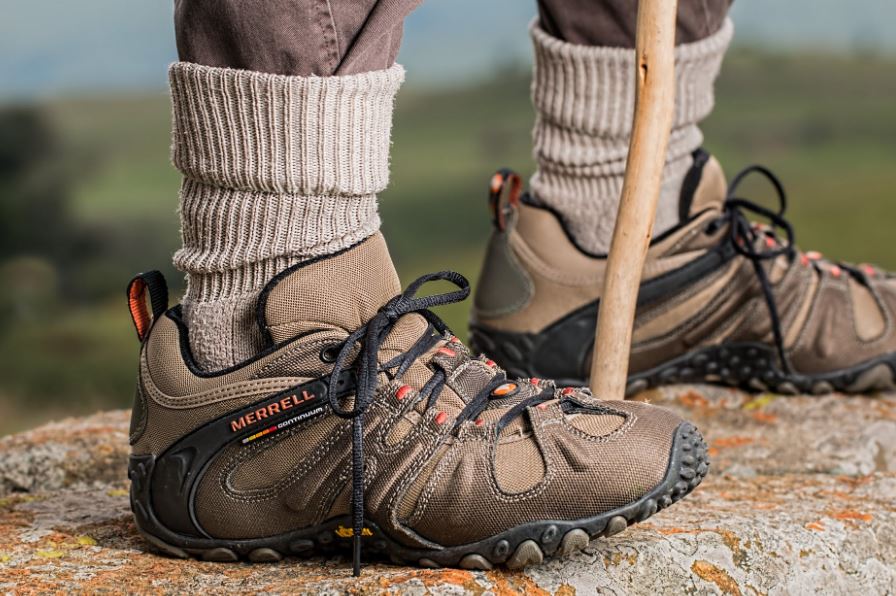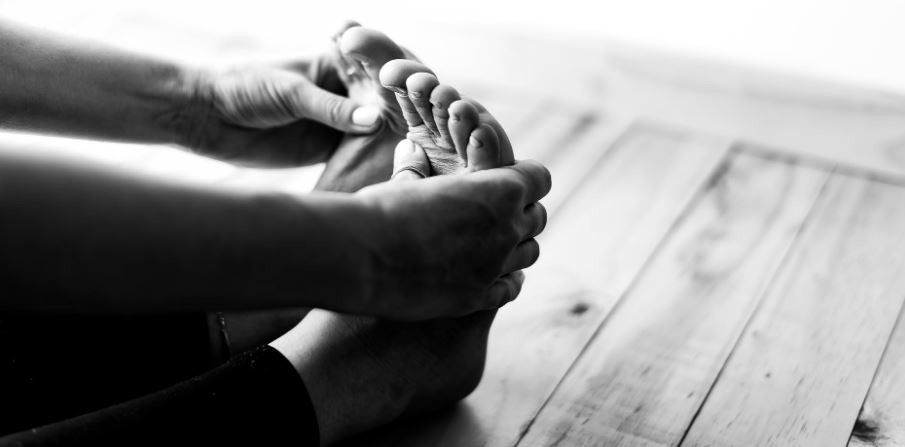In a lifetime, the average citizen walks between 75,000 and 115,000 miles. Most of these miles are walked on concrete floors with little to no support for your knees, lower back, and, most importantly, your feet. Even professional models suffer from back pain to varying degrees, which can be debilitating and painful.
Is walking or standing on concrete harmful to your feet? Long periods of walking or standing on concrete flooring can result in sore feet, varicose veins, swollen legs, and back pain. If you spend too much time standing on concrete flooring, you should consider replacing it with a softer surface, like cork or carpet. However, if you cannot change the type of flooring that is causing you discomfort, there are methods for making standing on concrete flooring extra comfortable.
Wear Proper Footwear
Standing jobs necessitate the use of supportive, stable footwear. They should be properly fitted for width and length, with some room for your feet to swell throughout the day. Shoes far more rigid than flexible are preferable, and the heel should be slightly higher than the forefoot.
Furthermore, far too many people seek the lightest shoe possible. Lighter shoes provide less support, which is bad for your feet.
The Best Shoes to Wear When Standing on Concrete
A quality pair of running shoes can prevent foot injuries in medical, airport, retail, warehouse, and factory workers who spend their day standing on concrete floors. Running shoes have a midsole that is specially designed to support the soft tissue of the arch and disperse stress. Investing in high-quality arch support can also be beneficial.
Change Positions Frequently
If you need to work on concrete floors, try to move around as much as possible. Bring a stool into your work area if possible to take regular breaks to sit, relieving strain on your back, feet, and legs. If you must stand, use a small step or a barstool to elevate one of your feet from the ground regularly.
Invest in Quality Socks
Moisture-wicking padded socks can help prevent blisters on the toes by providing extra cushioning. Socks should be free of holes, the proper size, and switched out halfway through a long shift to prevent moisture buildup.
Buy Anti-Fatigue Mats
Placing anti-fatigue mats on top of concrete floors in your workplace can offer a softer surface and ease the pain of standing on hard surfaces. Anti-fatigue mats are specifically designed to buffer your feet when standing for extended periods.
Anti-fatigue mats are available in rubber, vinyl, carpet, and wood. Using anti-fatigue mats can effectively deter foot pain from standing, but standing for an extended time can still cause back pain, even with the mats.
Wear Custom Foot Orthotics or Arch Supports
The leg and foot muscles do a lot of work while standing to stabilize the body. When the feet are properly supported by an orthotic, the legs and feet are aligned, and the muscles do not have to work as hard. As a result, the legs should be much less tired (and sore).
Maintain Dry and Clean Floors
Before standing for extended periods, ensure your concrete floors are free of debris. Keep your floors dry to avoid injury from a slip and fall while trying to walk. If you are using anti-fatigue mats, make sure they are flat and clean to avoid tripping.
You can also check out these effective techniques to prevent slippery concrete floors!
Walk Whenever You Get an Opportunity
If you don’t need to stand in the same spot every time, try to move around a little. Even if you’re moving in place, every step counts. This stimulates circulation and causes the muscles to work differently.
Extending Your Foot
Stretching the Achilles tendon and plantar fascia can help those prone to painful arches! You could also try the following simple arch stretching exercises:
- Facing a wall, place both hands on the wall at eye level.
- Place one leg behind you, keeping your front knee bent. Make sure both feet are flat on the floor.
- Lean forward, letting the front knee bend until you feel a gentle stretch in the back leg behind the knee.
- Hold for 30 seconds before repeating with your opposite leg.
- Rest for 30 seconds before repeating three to five times more.
Tips for Avoiding Back Pain While Standing on Concrete
There are numerous simple, everyday tips for preventing back pain. The following tips to stop back pain from standing on concrete for the whole of your long shifts are very effective in preventing common everyday back pain with no special effort required or doctor’s appointments to schedule:
Keep a Healthy Weight and Diet
Extra body weight places more strain on your back, increasing the likelihood of more severe back problems in the future.
Avoid Prolonged Bed Rest or Inactivity
Avoid any vigorous activities that put extra strain on your back. Getting enough rest while avoiding over-exertion will keep you in shape and out of your doctor’s office.
Stretch or Warm Up Before Working
Simple stretching exercises can help you prepare for a long day by activating your back muscles.
Wear Low-heeled, Comfortable Shoes
Comfortable footwear is among the most overlooked by those who endure back pain regularly. Concrete has no elasticity. Wearing inappropriate work shoes that provide little to no support significantly increases your risk of chronic back pain.
Not only should your shoes support the sole of your foot, but also the arch and heel area. High-heeled shoes with heels higher than one inch are frequently linked to chronic back pains disclosed by those who work in jobs that require constant contact with all hard surfaces, particularly concrete.
Standing in one spot for a lengthy time is well-known for causing foot and leg pain. This may be inescapable if you have a steady job, but you can mitigate the effects by following the steps outlined above.
Also, keep in mind that these issues do not only affect those who work standing up, but anybody on their feet for cooking, hobbies, housework, or even shopping.
Work is an unavoidable evil, but try these tips to reduce foot and back stress! If your pain persists, make an appointment with your doctor to get back to walking pain-free!




